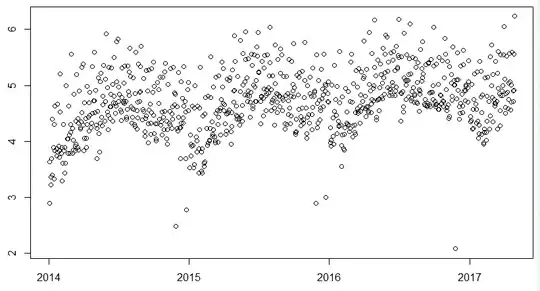I am running a negative binomial model and one of my predictor variables is a count variable. Since this variable was heavily skewed, I decided to log-transform it.
However, the effect of this variable is hypothesized to be non-linear. However, as soon as I include the squared term in my model, I obtain VIFs of these two variables that are >20, while all other predictors remain stable at VIFs between 1 and 5.
To my current understanding, the relationship should not be linear and hence multicollineairy should not arise.
Can anyone explain the cause of the multi-collinearty and give possible solutions to this problem?
